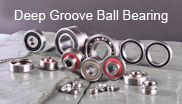Ceramic Ball Bearings
Ceramic ball bearings are the end result of a long evolution which probably started many thousands of years ago and this use of ceramic material has many benefits to offer the manufacturing industry.
Right from the very earliest days of man, round rollers were utilized to move heavy objects. It seems likely that our present day system of ball bearings has evolved from the logs that early humans used as primitive rollers, to move objects that were too heavy to be dragged along the ground. And every schoolchild has seen the pictures that show the ancient Egyptians using logs as rollers for the giant stone blocks that were used to build the pyramids. At some point in the distant past the idea of fixing the roller to the object being Ceramic Bearing moved was born and this led to a primitive vehicle with the first ¨wheels¨.
However, the world had to wait until the end of the eighteenth century before the first bearings design was developed. In 1794, Philip Vaughan a Welsh iron-master patented a design to support a carriage axle. His basic idea was continually updated, throughout the nineteenth and early twentieth centuries, stimulated by the rapid advancement of the automobile and the bicycle. The most recent development has been the use of durable ceramics in the manufacture of ball bearings which has produced a better product. Read on and discover the advantages of using ceramic material:
, These days, The ceramic ball are taking over from steel ball bearings in many machine applications. In particular, the ceramic ball bearing is often chosen for use in severe environments where high speeds and a lack of lubrication are an issue for standard steel bearings and bearing contamination is a problem.
, In high speed applications there are two major advantages to ceramic material; the rolling elements have both low density and greater rigidity so friction is minimized and heat and vibration are kept to the absolute minimum.
, Ceramic ball bearings have useful electrical insulation properties, high Ball Bearings hardness and low density all of which increase their efficiency as a bearing material.
, Ceramic has a much greater resistance to wear and its electrical insulation properties combined with a capacity to work smoothly in adverse running conditions, mean that it is the best choice for fluid machinery, electric motors and professional hand tools.
, Hybrid ceramic ball bearings have a longer service life and will last as much as 10 times longer than an all-steel bearing. This is important because it reduces machinery down-time and maintenance costs.
, Resistant to corrosion and non-magnetic.
, Lighter than steel ball bearings, weighing as much as 40% less than steel balls. This allows hybrid ceramic bearings to work 20% - 40% faster than other bearings and to use a smaller amount of energy to maintain its speed.
Ceramic ball bearings will be with us for a long time yet, as they are a simple component with low manufacturing costs. However, looking to the future it is clear that other types of bearings are being experimented with. One interesting new idea is the use of magnets that push away from each other and keep two objects apart. Another clever theory is a bearing that pushes air into a tiny gap between two close fitting surfaces, so that they float apart from one another on a compressed air cushion. However, these types of bearing are still too expensive to make and operate and so we are left with the simple efficiency of the trusted ball bearing.



